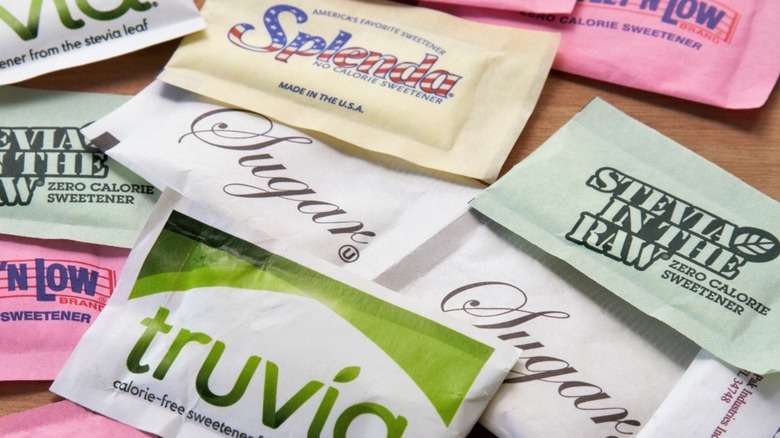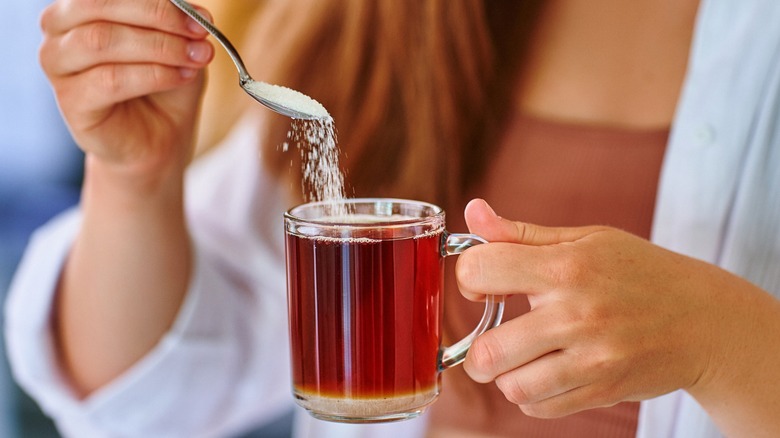Stevia Vs. Splenda: Is There Really A Big Difference?
While both stevia and sucralose (commonly known as Splenda) can replace cane sugar and other sweeteners, Splenda is an artificial sweetener and stevia is a natural one. Both do not have calories, and you can find them each in various forms, including powdered, granulated, and liquid. However, there are also several other differences between them, including their formulations and sweetness levels.
According to Healthline, "Sucralose is a type of indigestible artificial sugar that's created chemically by replacing some of the atoms in sugar with chlorine. To make Splenda, digestible sweeteners like maltodextrin are added to sucralose." In the 1990s, the company Splenda began producing this form of sucralose. Today, it's recognized as the "yellow packet" that's found at restaurants and is one of the most used artificial sweeteners in the United States.
On the other hand, stevia's sweetness is due to steviol glycosides, which come from the leaves of the stevia plant. Stevia extract is often blended with additives like maltodextrin, erythritol, and dextrose. These blends are not only sold by Splenda but also brands like Stevia in the Raw. Now found more widely in restaurants, stevia can be recognized as the "green packet."
Sweetness and uses of Splenda and stevia
A small amount of stevia and Splenda can go a long way. Splenda is somewhere between 450 and 650 times sweeter than sugar, while stevia is about 200 times sweeter. When it comes to Splenda, two teaspoons of granulated sugar (about 7 grams) is equivalent to the same level of sweetness as one packet of Splenda (which contains just one gram of the artificial sweetener). However, Splenda Granulated Sweetener, which has a slightly different formulation, follows a simple 1-to-1 substitution ratio. Splenda-brand stevia products follow the same substitution rules as do the packets and granules from Stevia in the Raw.
Whatever you're sweetening, Splenda and stevia can both effectively replace sugar for just about any purpose. The one you choose really just depends on the taste you prefer, as folks that regularly use these sweeteners sometimes have an aversion to one or the other. It may require some trial and error to find the sugar substitute that suits your palate best.
Liquid formulations are ideal for adding to beverages, like a truly perfect iced coffee, mocktail, cocktail, frappé, or hot cocoa. Opt for the granulated products when baking, but keep in mind that sweets made with Splenda may finish cooking more quickly. You should also use the granules wherever you would normally use granulated sugar, like when making a glaze for chicken teriyaki or to sweeten up a salad dressing made from the dregs of a nearly empty condiment jar.

